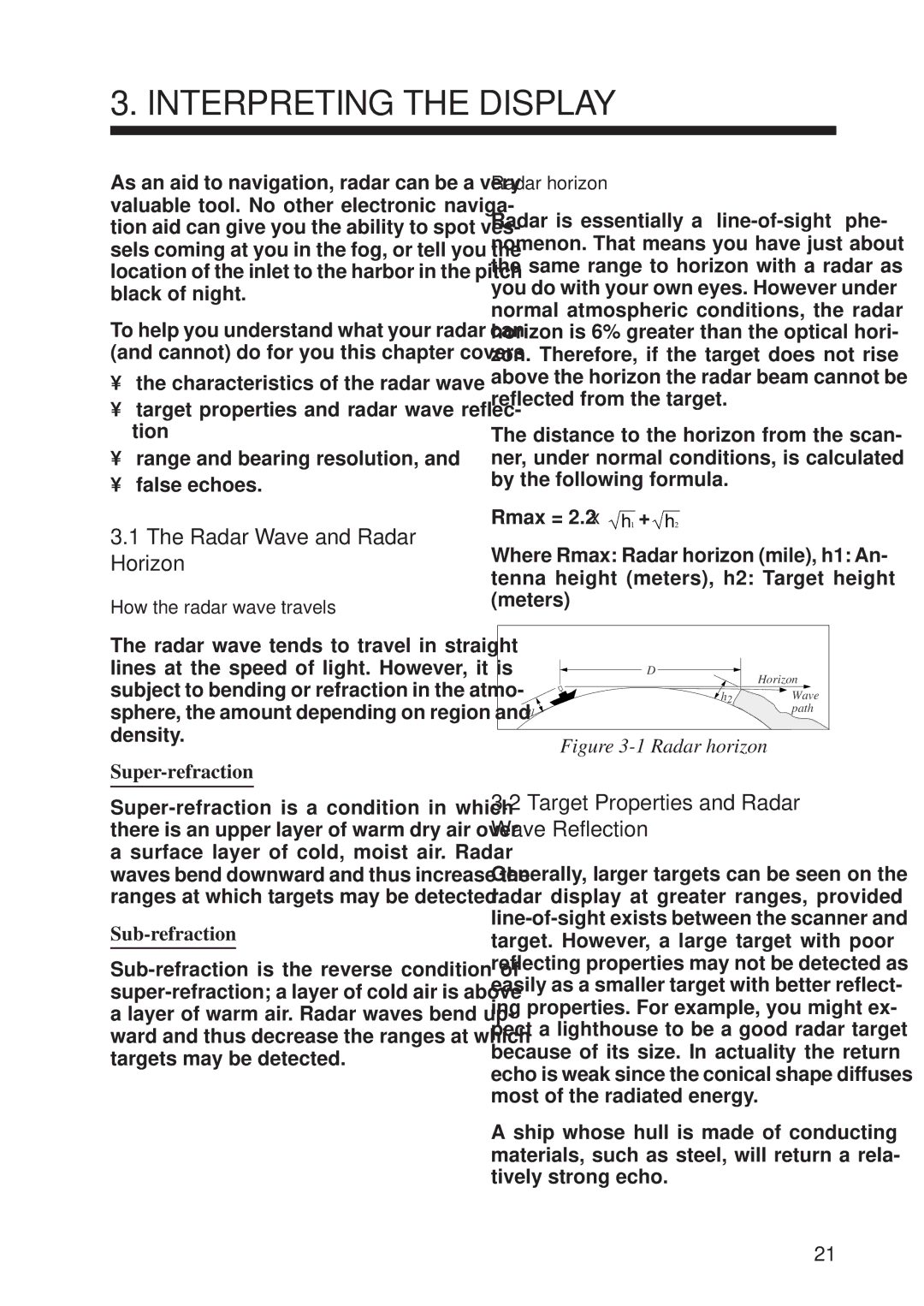
3. INTERPRETING THE DISPLAY
As an aid to navigation, radar can be a very valuable tool. No other electronic naviga- tion aid can give you the ability to spot ves- sels coming at you in the fog, or tell you the location of the inlet to the harbor in the pitch black of night.
To help you understand what your radar can (and cannot) do for you this chapter covers
•the characteristics of the radar wave
•target properties and radar wave reflec- tion
•range and bearing resolution, and
•false echoes.
3.1The Radar Wave and Radar Horizon
How the radar wave travels
The radar wave tends to travel in straight lines at the speed of light. However, it is subject to bending or refraction in the atmo- sphere, the amount depending on region and density.
Super-refraction
Sub-refraction
Radar horizon
Radar is essentially a
The distance to the horizon from the scan- ner, under normal conditions, is calculated by the following formula.
Rmax = 2.2 x h1 + h2
Where Rmax: Radar horizon (mile), h1: An-
tenna height (meters), h2: Target height (meters)
D | Horizon |
| |
h2 | Wave |
h1 | path |
Figure 3-1 Radar horizon
3.2Target Properties and Radar Wave Reflection
Generally, larger targets can be seen on the radar display at greater ranges, provided
A ship whose hull is made of conducting materials, such as steel, will return a rela- tively strong echo.
21
